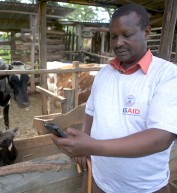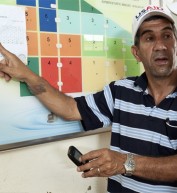In developing countries, capital markets are increasingly capable of supporting energy efficiency financing.
Developing economies sometimes lack the robust and established financial markets to facilitate funding for energy efficiency improvements. Addressing this issue is not an attempt to create or reform a country’s entire financial sector. Rather, governments can productively focus on a few specific areas to support financing for energy efficiency.
Credit Development
Market actors looking for energy efficiency financing have varying degrees of creditworthiness. This has made it challenging to standardize underwriting and to reach those markets most in need of financing. In some cases, borrowers with good credit don’t necessarily need dedicated financing. They may have access to revolving credit accounts, personal loans, business lines of credit, cash and other means to cover a range of energy efficiency investments. To shift capital investment toward energy efficiency, governments and financial institutions can establish credit facilities and other mechanisms that provide customized financing for related projects.
Over the last decade, the European Bank for Reconstruction and Development (EBRD) has created many Sustainable Energy Financing Facilities through which it offers lines of credit to partner banks in the former Soviet Union and to North African countries. These are local banks that already have credit relationships with industrial clients. They split the EBRD funding and on-lend it to small and medium enterprises (SMEs), typically for small loans in the range USD $500,000 to $5,000,000. This level of funding is usually sufficient for making efficiency improvements with quick payback periods, such as the purchase of efficient motors with modern control systems. The EBRD pays for marketing, audits of the industrial premises and training of partner bank officials to assess energy efficiency applications in order to ensure that risks are managed and the funding is well-targeted. A systematic approach is adopted, involving use of standard “approved equipment” and “approved supplier” lists. This enables negotiations with suppliers for discounts and reduces transaction costs and risks.
Credit enhancement is often part of, or developed in parallel with, such credit facility initiatives. This involves dedicating public funds to reduce perceived risks, interest rates and other costs associated with designated financing. Governments (and in some cases financial institutions with government backing, such as regional development banks) can establish mechanisms like loan guarantees (in which the loan is guaranteed by a federal agency program), loan loss reserves (in which a pool of funds equal to a percentage of the total loan portfolio is set aside to cover defaults), and loan insurance (in which governments insure loans, recovering program costs through insurance premiums attached to loan payments).
Secondary Market Loan Pooling and Shared Risk
Loan pooling is a means of reducing transaction costs and increasing investor interest by aggregating similar types of loans, which can then be repackaged as securities and purchased by other investors. In developed countries, loan pooling is applied to car loans, mortgages and credit card debt. Such secondary market financing provides low-cost financing or “liquidity” for borrowers, while also creating profitable investment vehicles for investors. Because financial institutions may lack technical experience and/or borrowers may lack credit, shared-risk schemes provide necessary guarantees that lenders will not lose their entire investment in the event of default. Many multilateral development banks and international donors have developed programs that leverage shared-risk schemes to facilitate private sector energy efficiency investments in developing countries.
While such experience is limited and anecdotal in the energy efficiency sector, some investors have been willing to purchase energy efficiency loan portfolios. Perhaps the most successful pooling experience has been associated with the U.S. Energy Savings Performance Contracting (ESPC) program. ESPC engages pre-qualified energy service companies (ESCOs) to develop energy efficiency projects at U.S. Government facilities according to technical and contract rules which provide technical rigor and financial transparency to ESPC projects. These firms create individualized trusts that pool select ESPC debt instruments, and a key element of success is that ESPC loans are viewed as equivalent to U.S. Government bonds in terms of risk. The individual projects also tend to be several million dollars each, which helps support the transaction costs needed for these firms to make their margins. This model, while it involves complex transactions, could be replicated in countries with sufficiently creditworthy governments.
Another example of loan pooling is USAID’s Development Credit Authority (DCA). Serving as the guarantor in case of loan default, the USAID DCA has facilitated an investment guarantee of US$100 million in funding to promote clean energy solutions for India through a partnership with U.S.-based institutional investor Northern Lights Capital Group. This was done via a local partner, Nereus Capital’s India Alternative Energy Fund. This fund’s investment focus includes wind power, hydropower, solar power and large-scale energy efficiency projects.
Performance Contracting
Energy savings performance contracts and energy service agreements (ESAs) are two types of contracts paid on the basis of actual energy saved and are offered by ESCOs to customers (individual, building owner, real estate company) in order to finance energy efficiency projects. ESCOs typically act as the project developer and work with a customer to define a potential project. The ESCO then uses performance-based contracting to develop the project within certain economic and financial parameters, usually over extended periods such as 10 years or more, and with energy savings either indirectly providing the basis for payments or guaranteed to exceed average debt payments. Any savings during the contract term beyond what was guaranteed by the ESCO are additional benefits to the customer while savings below agreed levels can result in payments from the ESCO to the customer. In addition, since the customer owns the equipment in this model, any savings realized after the contract ends are retained by the customer.
ESCOs often assume the majority of the risk in such projects, which can pose challenges if the ESCO is ill-equipped to model savings, install equipment, manage facility performance or secure financing on favorable terms. For example, customers would not be willing to pay for an energy efficiency project if it turns out that the project did not realize the promised cost savings. ESPCs are usually designed so that energy cost savings are either split between the customer and the ESCO or the savings are guaranteed to exceed debt payments over the contract term. When funding is made available through other means (legislation, international agreements, etc.), the financing is commonly used to develop and implement ESPCs.
In China, public buildings represent less than 1 percent of current ESPCs but account for 6.2 percent of the country’s total energy use. A pilot is currently being launched in Shenzhen that requires ESPCs for public buildings and creates building energy budgets based on building energy intensity. As energy demand decreases through the ESPCs’ enhancements, utility payments are maintained at their original level to cover repayment for the investment.
India took steps to develop the ESCO energy efficiency market by sharing the associated technical, financial, construction and performance risk. The Partial Risk Guarantee Program for Energy Efficiency (PRGFEE) lowered the risk to lenders through repayment guarantees made by the Bureau of Energy Efficiency (BEE) for a maximum of 50 percent of the loan. The program was designed to demonstrate achievable savings in energy and greenhouse gas (GHG) emissions and increase the exposure of local lenders.
Learn about the key players in the energy efficiency financing sector.







Comment
Make a general inquiry or suggest an improvement.